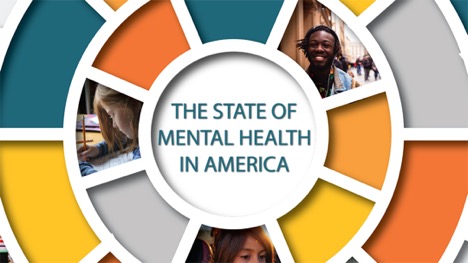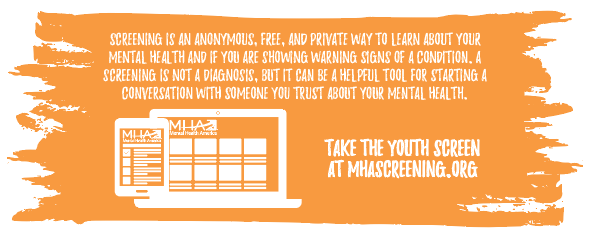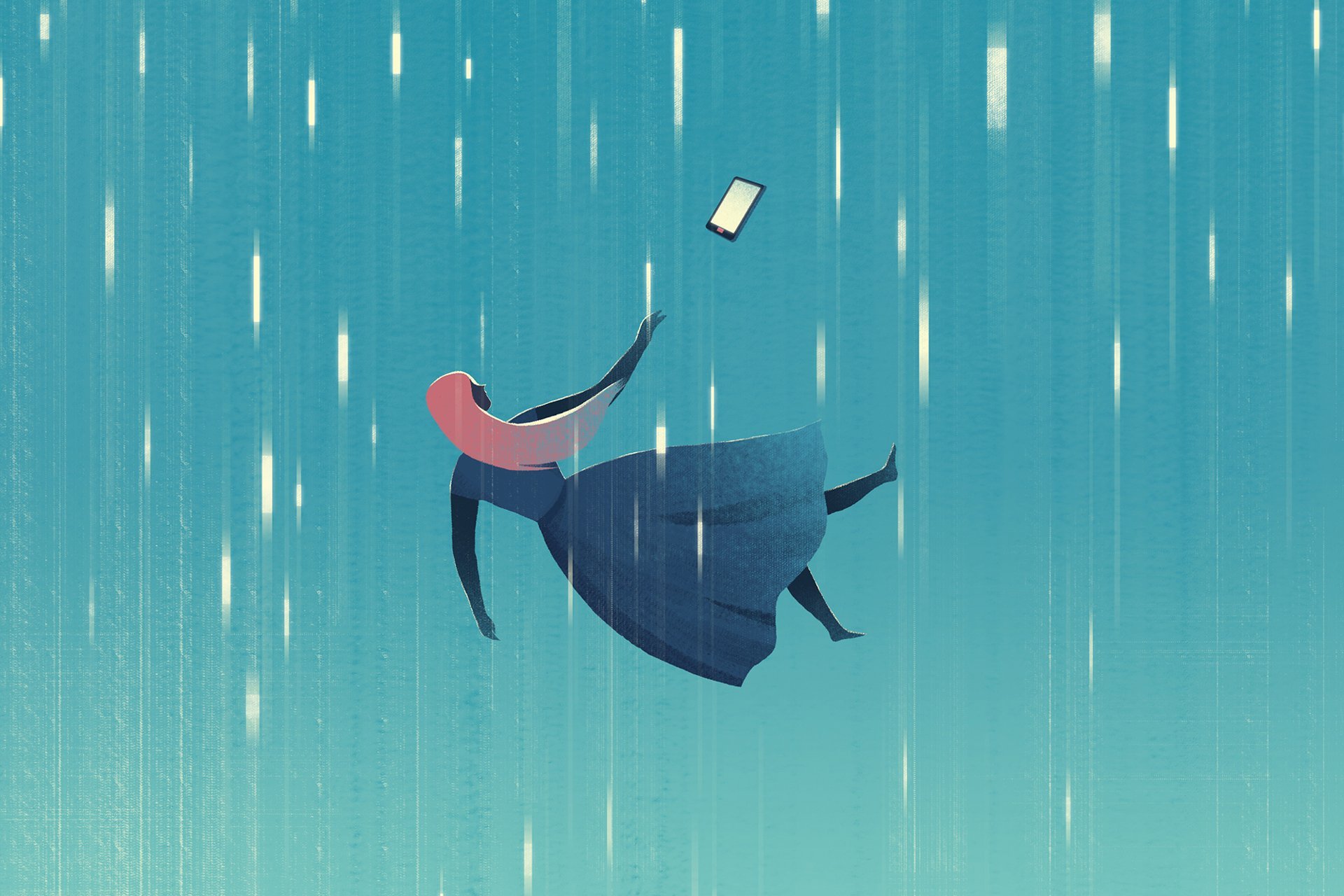The State of Mental Health in America
01/11/18 15:24

Mental Health America has just released the State by State rankings for 2018 mental health. The results are summarized below.
Overall Ranking
A high overall ranking indicates lower prevalence of mental illness and higher rates of access to care. A low overall ranking indicates higher prevalence of mental illness and lower rates of access to care. The combined scores of all 15 measures make up the overall ranking. The overall ranking includes both adult and youth measures as well as prevalence and access to care measures.
Illinois is ranked at #11 – improved from #15 in 2017
Adult Ranking
States with high rankings have lower prevalence of mental illness and higher rates of access to care for adults. Lower rankings indicate that adults have higher prevalence of mental illness and lower rates of access to care.
Illinois ranked #6 – improved from #9 in 2017
Youth Ranking
States with high rankings have lower prevalence of mental illness and higher rates of access to care for youth. Lower rankings indicate that youth have higher prevalence of mental illness and lower rates of access to care.
Illinois is ranked #15 – improved from # 18 in 2017
For much more detail about how the data was collected, analyzed etc, click on this link:
State of mental health
Student Led Innovation in Mental Health
17/10/18 09:56
Beyond Awareness: Student-Led Innovation in Campus Mental Health

Collegiate Mental Health Innovation Council 2018 Summary Report and Program Highlight
While awareness campaigns and policy changes are important parts of supporting mental health and wellbeing on campus, new programmatic solutions led by students offer important perspectives and ideas about how to best meet the needs of their peers. In a world of limited resources, student leadership can make all the difference in creating alternatives and supplements to traditional services, such as working with counselors or psychiatrists or attending group therapy.
With an understanding of the effectiveness of peer support, the influence of community, and the impact of the consumer voice, Mental Health America created its inaugural Collegiate Mental Health Innovation Council (CMHIC) in 2017. CMHIC is dedicated to discussing the latest issues students face when balancing higher education with mental health concerns and highlighting student-led innovation on campus that addresses these concerns. CMHIC consists of student leaders who have created programs or lead advocacy on campus that fills gaps in traditional mental health supports and services in their communities.
The first report, Beyond Awareness: Student-Led Innovation in Campus Mental Health, highlights the impact of disability supports, peer support, and technology on student mental health and the role of student leadership in each of these areas.
Major highlights:
• For more comprehensive disability supports, student leaders can create education-based programs and skill-building supports for their peers, and students or faculty can lead courses for academic credit to allow students to prioritize their wellbeing. Students can also serve as navigators for the often confusing and challenging process of obtaining accommodations.
• Peer support is a critical part of engaging more students, providing support outside of hours spent in treatment, creating community, shifting demand from counseling services, and offering low to no cost options for students looking for help
• Technology can help students connect to existing professionals, support one another, and share information on wellbeing.
In addition to focusing on issues that have the potential to impact mental health on campus, members provided information about their programs and advice for students looking to do the same things on their campuses.

Collegiate Mental Health Innovation Council 2018 Summary Report and Program Highlight
While awareness campaigns and policy changes are important parts of supporting mental health and wellbeing on campus, new programmatic solutions led by students offer important perspectives and ideas about how to best meet the needs of their peers. In a world of limited resources, student leadership can make all the difference in creating alternatives and supplements to traditional services, such as working with counselors or psychiatrists or attending group therapy.
With an understanding of the effectiveness of peer support, the influence of community, and the impact of the consumer voice, Mental Health America created its inaugural Collegiate Mental Health Innovation Council (CMHIC) in 2017. CMHIC is dedicated to discussing the latest issues students face when balancing higher education with mental health concerns and highlighting student-led innovation on campus that addresses these concerns. CMHIC consists of student leaders who have created programs or lead advocacy on campus that fills gaps in traditional mental health supports and services in their communities.
The first report, Beyond Awareness: Student-Led Innovation in Campus Mental Health, highlights the impact of disability supports, peer support, and technology on student mental health and the role of student leadership in each of these areas.
Major highlights:
• For more comprehensive disability supports, student leaders can create education-based programs and skill-building supports for their peers, and students or faculty can lead courses for academic credit to allow students to prioritize their wellbeing. Students can also serve as navigators for the often confusing and challenging process of obtaining accommodations.
• Peer support is a critical part of engaging more students, providing support outside of hours spent in treatment, creating community, shifting demand from counseling services, and offering low to no cost options for students looking for help
• Technology can help students connect to existing professionals, support one another, and share information on wellbeing.
In addition to focusing on issues that have the potential to impact mental health on campus, members provided information about their programs and advice for students looking to do the same things on their campuses.
Download the full report by clicking here.
Student Mental Health
22/08/18 11:26

Back to School: Recognizing Depression
It’s not unusual to have “the blues” or feel down occasionally—especially when you are in middle or high school. Bodies go through major chemical changes as you mature. The expectations of your teachers, family and friends—and the fear of not meeting them—can create stress and worry. When things go wrong at school or at home, you may feel unsure of yourself or wonder how you fit in. The idea of preparing for college or making decisions about your future can be overwhelming. On top of that, you face choices about friendships, sex, alcohol, and drugs. You may feel like you are getting mixed messages from parents, teachers, friends, and society.
Feeling down from time to time is different than having depression. When you have depression, it feels like there is a dark cloud over everyone and everything, and it is hard to feel good.

Signs of Depression
It is important to recognize depression so it can be treated. The earlier you get help, the sooner you can get back to feeling like yourself again. If you have some of the symptoms below, you might be dealing with depression.[3]
- Having trouble with schoolwork
- Not participating in activities you used to enjoy
- Sadness and hopelessness
- Lack of enthusiasm, energy or motivation
- Anger and rage
- Overreaction to criticism
- Feelings of being unable to meet expectations
- Poor self-esteem or guilt
- Problems with making decisions, lack of concentration or forgetfulness
- Restlessness and agitation
- Changes in eating or sleeping patterns
- Rebelling against parents, teachers, or other authority figures
- Suicidal thoughts or actions
Depression can make people feel hopeless about their current circumstances or the future. Left untreated, depression can cause some young people to think about doing drastic or violent things.
If you see suspicious posts on social media or hear people say things that suggest they might be planning to hurt themselves or other people, tell an adult right away. If you feel this way, don’t suffer in silence! It is important to remember that there is help and there is hope.
If you or someone you know is experiencing suicidal thoughts, seek immediate help by calling 911 or going to the closest emergency room. Trust your instincts, and if necessary, break a confidence in order to save a life.

Overcoming Teen Depression and Anxiety: Brynn’s Story
14/08/18 13:54
Overcoming Teen Depression and Anxiety: Brynn’s Story
Reading Time: 3 minutes

Parents don’t always recognize the symptoms of teen depression and anxiety in their son or daughter. Sometimes, teenagers themselves don’t understand what is happening to them. This is Brynn’s story of her experience with teen depression and anxiety.
By Brynn*
Teen Depression and Anxiety
I have always been a quieter kid, so when I started retreating into myself my junior year, it seemed like no one noticed. I got two to four hours of sleep a night, ate infrequently, felt worthless, and began to lose interest in everything—classes, friends. As time went on, I became more and more convinced that this was just how I was. I would think about asking for help and then be afraid of being a burden on my friends and family—constantly reinforcing the idea that they did not want me around. I woke up every morning crying and dragged myself out of bed, feeling like I was carrying around a 50-pound backpack.
Despite this, I kept up my grades and my parents had no idea what was happening; they were frustrated with me for being “too sensitive.”
That winter, I began wanting to hurt myself. I finally worked up the courage to say something to my mom, and she was adamant it was just PMS. My confidence was crushed. And my symptoms only got worse. My relationship with my parents deteriorated as we fought more and more. My siblings, whom I used to be so close with, now asked me “where the old Brynn was” when I snapped at them. It took all my energy just to get through the day.
Eventually that summer, I confessed to my friends how I had been feeling—the worthlessness, the suicidal thoughts. But what could they do? I was entrusting them with something way too important and complicated for 16-year-olds to handle. As the summer went by, I became increasingly fixated on my weight, weighing myself daily, over-exercising, and restricting myself to one meal a day.
Experiencing Anxiety Physical Symptoms
Then it was time for school again. I felt crushed and helpless with all the pressures of college admissions, my job, orchestra, good grades, a varsity sport. That’s when the anxiety attacks started. In a way, I think they saved me. The overwhelming shaking and hyperventilating was something physical my parents could see, and that’s when they urged me to see the school guidance counselor. She almost immediately referred me to a therapist who right away saw the bigger issue—depression.
My journey to health started there, but it was—and is—far from over. Because of my depression, I started hurting myself and binging. During my senior year, I spent almost three months out of school in the hospital and various therapy programs for teen depression and anxiety. We struggled over and over to find the right combination of meds that would take the edge off my symptoms. By spring, we did find the right “cocktail,” and that is when I turned the corner.
I will be struggling with depression and anxiety for life, but there is hope for me and other victims of these mental disorders. If anything in my story resonated with you, I urge you to tell a trusted adult about the problems that you are having. There is never any harm in talking to the school guidance counselors; they proved to be an invaluable resource to me over the course of my high school experience.
If a friend or family member has talked to you about experiencing anything like this, know that they can get help. Mental health disorders like teen depression and anxiety are not symbols of weakness; they are serious illnesses that can be treated with therapy and medicine. I got through high school, and I am proud to be going to college next year.
*author’s first name
For more information on the signs of Teen depression and anxiety click on the logo below:

Reading Time: 3 minutes

Parents don’t always recognize the symptoms of teen depression and anxiety in their son or daughter. Sometimes, teenagers themselves don’t understand what is happening to them. This is Brynn’s story of her experience with teen depression and anxiety.
By Brynn*
Teen Depression and Anxiety
I have always been a quieter kid, so when I started retreating into myself my junior year, it seemed like no one noticed. I got two to four hours of sleep a night, ate infrequently, felt worthless, and began to lose interest in everything—classes, friends. As time went on, I became more and more convinced that this was just how I was. I would think about asking for help and then be afraid of being a burden on my friends and family—constantly reinforcing the idea that they did not want me around. I woke up every morning crying and dragged myself out of bed, feeling like I was carrying around a 50-pound backpack.
Despite this, I kept up my grades and my parents had no idea what was happening; they were frustrated with me for being “too sensitive.”
That winter, I began wanting to hurt myself. I finally worked up the courage to say something to my mom, and she was adamant it was just PMS. My confidence was crushed. And my symptoms only got worse. My relationship with my parents deteriorated as we fought more and more. My siblings, whom I used to be so close with, now asked me “where the old Brynn was” when I snapped at them. It took all my energy just to get through the day.
Eventually that summer, I confessed to my friends how I had been feeling—the worthlessness, the suicidal thoughts. But what could they do? I was entrusting them with something way too important and complicated for 16-year-olds to handle. As the summer went by, I became increasingly fixated on my weight, weighing myself daily, over-exercising, and restricting myself to one meal a day.
Experiencing Anxiety Physical Symptoms
Then it was time for school again. I felt crushed and helpless with all the pressures of college admissions, my job, orchestra, good grades, a varsity sport. That’s when the anxiety attacks started. In a way, I think they saved me. The overwhelming shaking and hyperventilating was something physical my parents could see, and that’s when they urged me to see the school guidance counselor. She almost immediately referred me to a therapist who right away saw the bigger issue—depression.
My journey to health started there, but it was—and is—far from over. Because of my depression, I started hurting myself and binging. During my senior year, I spent almost three months out of school in the hospital and various therapy programs for teen depression and anxiety. We struggled over and over to find the right combination of meds that would take the edge off my symptoms. By spring, we did find the right “cocktail,” and that is when I turned the corner.
I will be struggling with depression and anxiety for life, but there is hope for me and other victims of these mental disorders. If anything in my story resonated with you, I urge you to tell a trusted adult about the problems that you are having. There is never any harm in talking to the school guidance counselors; they proved to be an invaluable resource to me over the course of my high school experience.
If a friend or family member has talked to you about experiencing anything like this, know that they can get help. Mental health disorders like teen depression and anxiety are not symbols of weakness; they are serious illnesses that can be treated with therapy and medicine. I got through high school, and I am proud to be going to college next year.
*author’s first name
For more information on the signs of Teen depression and anxiety click on the logo below:

Smartphone use has radical impact on mental health of teens, claims San Diego SU psych professor
07/08/17 09:48

San Diego State University professor of psychology and author Jean Twenge has claimed that smartphone usage is having a radical impact on both the behavior and mental health of U.S. teenagers.
The arrival of the smartphone has radically changed every aspect of teenagers’ lives, from the nature of their social interactions to their mental health […] Rates of teen depression and suicide have skyrocketed since 2011. It’s not an exaggeration to describe iGen as being on the brink of the worst mental-health crisis in decades. Much of this deterioration can be traced to their phones.
Far from being the usual generalized complaint about teens spending too much time staring at their screens, Dr Twenge has plenty of hard data to support her contentions – made in The Atlantic, the magazine in which Laurene Powell Jobs recently bought a majority stake …
The long-form article, entitled Have smartphones destroyed a generation?, is packed full of graphs – each showing the launch of the iPhone as a reference point.
A 2017 survey of more than 5,000 American teens found that three out of four owned an iPhone.
They show that teens today spend far less time hanging out with their friends, fewer of them have a driving license, they date less, have less sex, get less sleep and are more likely to feel lonely.
There are also some stark statistics.
Teens who spend three hours a day or more on electronic devices are 35 percent more likely to have a risk factor for suicide, such as making a suicide plan […]
Boys’ depressive symptoms increased by 21 percent from 2012 to 2015, while girls’ increased by 50 percent—more than twice as much. The rise in suicide, too, is more pronounced among girls. Although the rate increased for both sexes, three times as many 12-to-14-year-old girls killed themselves in 2015 as in 2007, compared with twice as many boys. The suicide rate is still higher for boys, in part because they use more-lethal methods, but girls are beginning to close the gap.
Twenge is quick to note that smartphones are not the only factor, but she argues that it is a key one.
Parenting styles continue to change, as do school curricula and culture, and these things matter. But the twin rise of the smartphone and social media has caused an earthquake of a magnitude we’ve not seen in a very long time, if ever. There is compelling evidence that the devices we’ve placed in young people’s hands are having profound effects on their lives—and making them seriously unhappy.
And far from the common belief that kids grow up too quickly these days, she argues that the opposite is true when you examine common markers like going out without their parents, earning their own money and starting to date.
Across a range of behaviors—drinking, dating, spending time unsupervised— 18-year-olds now act more like 15-year-olds used to, and 15-year-olds more like 13-year-olds. Childhood now stretches well into high school.
The piece is illustrated with depressing examples of behavioral changes.
One of the ironies of iGen life is that despite spending far more time under the same roof as their parents, today’s teens can hardly be said to be closer to their mothers and fathers than their predecessors were. “I’ve seen my friends with their families—they don’t talk to them,” Athena told me. “They just say ‘Okay, okay, whatever’ while they’re on their phones. They don’t pay attention to their family.” Like her peers, Athena is an expert at tuning out her parents so she can focus on her phone. She spent much of her summer keeping up with friends, but nearly all of it was over text or Snapchat. “I’ve been on my phone more than I’ve been with actual people,” she said. “My bed has, like, an imprint of my body.”
There’s the now common portrait of social media usage making people feel unhappier as they compare their own lives with the self-curated online version of the lives of their peers.
Today’s teens may go to fewer parties and spend less time together in person, but when they do congregate, they document their hangouts relentlessly—on Snapchat, Instagram, Facebook. Those not invited to come along are keenly aware of it. Accordingly, the number of teens who feel left out has reached all-time highs across age groups. Like the increase in loneliness, the upswing in feeling left out has been swift and significant.
Twenge doesn’t have any easy solutions. She acknowledges that it’s not realistic to expect teens to dramatically curtail their usage of electronic devices or social media. But she suggests that modest changes could help.
Significant effects on both mental health and sleep time appear after two or more hours a day on electronic devices. The average teen spends about two and a half hours a day on electronic devices. Some mild boundary-setting could keep kids from falling into harmful habits.
The whole piece is well worth a read, especially for parents.
From "The Atlantic" - link to full article: Here
